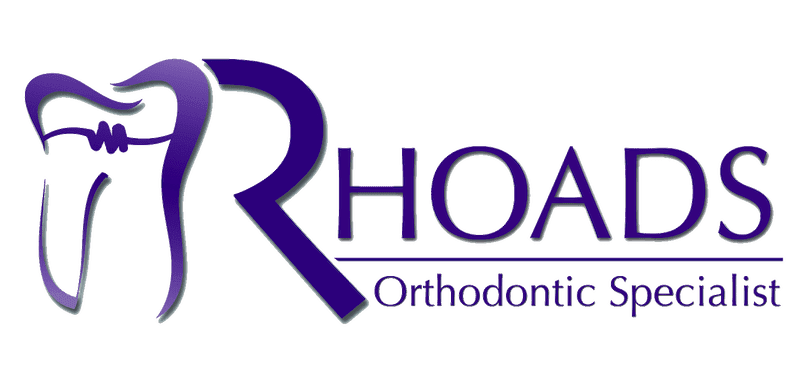In the past, orthodontic treatment options were quite limited. Today, there are several routes to choose from. Rhoads Orthodontics is here to help you navigate these options and determine the best one for you. So, how do oral hygiene practices differ for braces and Invisalign users? Let’s take a look!
Which is Which?
- Traditional braces comprise several components that work together to gradually straighten teeth through regular adjustments. The brackets can be made of either metal or ceramic.
- Clear aligners, such as Invisalign, are worn as trays that progressively shift teeth. Each set of aligners is slightly different, facilitating this gradual movement.
Comparing and Contrasting
Before diving into maintenance, let’s explore the key characteristics of these two options. Your choice will ultimately depend on your specific needs and preferences, which Dr. Rhoads and our team. Here are the basic qualities of each method:
- Treatment Duration:
- Invisalign: The duration of Invisalign treatment with Dr. Rhoads varies depending on the complexity of the case and the patient’s compliance with wearing the aligners as instructed. On average, treatment may take 12 to 18 months.
- Braces: The duration of braces treatment also varies significantly. More severe orthodontic issues require more time, ranging from 18 months to 3 years.
- Comfort:
- Invisalign: These custom-made plastic trays fit snugly over teeth and have smooth edges, reducing the likelihood of irritation to the gums and cheeks. They are generally more comfortable than traditional braces.
- Braces: Traditional braces can cause discomfort in the beginning and irritate the soft tissues of the mouth. Patients may experience soreness after adjustments or when wires or brackets rub against the cheeks or lips.
- Effectiveness:
- Invisalign: Clear aligners are a great option for treating mild to moderate orthodontic issues, such as crooked teeth, gaps, and minor bite problems. More complex cases or severe malocclusions might not be ideal for this treatment.
- Braces: Braces can address a broader range of orthodontic problems, including severe misalignment, overcrowding, overbites, crossbites, and underbites. They provide precise control over tooth movement and are often recommended for complex cases.
- Dietary Restrictions:
- Invisalign: There aren’t any dietary restrictions with clear aligners since you can take them out. Excess sugar should be avoided for general oral health, but you can eat your favorite foods without worrying about damaging your aligners.
- Braces: Patients with braces should always stay away from hard, sticky, or chewy foods, as they can cause direct damage to wires and brackets.
- Adjustments:
- Invisalign: Treatment involves changing to a new set of aligners every one to two weeks, with each new set working to shift your teeth. These adjustments are made at home, though you’ll likely visit our office for progress checks.
- Braces: Adjustments are done in-office by our Rhoads Orthodontics team. During these appointments, your wires may be tightened or changed over the course of treatment.
Practicing Good Oral Hygiene
Now we can explore how your oral hygiene routine will vary with braces vs. Invisalign:
- Braces
- Brushing: We recommend using a soft-bristled toothbrush and fluoride toothpaste. It’s important to brush in the morning and before bedtime. Pay extra attention to the areas around the wires and brackets, as debris can easily accumulate there.
- Flossing: If traditional flossing is challenging, consider investing in a water flosser for effective cleaning.
Interdental Brushes: These smaller tools are useful for cleaning tight spaces between teeth and around braces. - Mouthwash: Using an antibacterial or fluoride mouthwash helps reduce the risk of gum disease and tooth decay.
- Invisalign
- Brushing: With Invisalign, you have the advantage of removing aligners for thorough cleaning after meals. Always clean them to prevent food particles from getting trapped against your teeth.
- Flossing: Regular flossing after meals is crucial for maintaining oral hygiene with Invisalign.
Cleaning Aligners: Rinse your aligners with water when removed. For deeper cleaning, use a soft toothbrush with unscented soap or specialized Invisalign cleaning crystals. - Mouthwash: Using antibacterial mouthwash is beneficial for maintaining oral health while using Invisalign aligners.
Regular attendance at your scheduled appointments at Rhoads Orthodontics with Dr. Rhoads is crucial for both treatments. Don’t skip these appointments—they are essential for your treatment progress!
The Best of Both Worlds
Both of these options offer fantastic benefits for our patients! We look forward to discussing your orthodontic journey further. Contact our Cranberry Township office to book a complimentary consultation.



